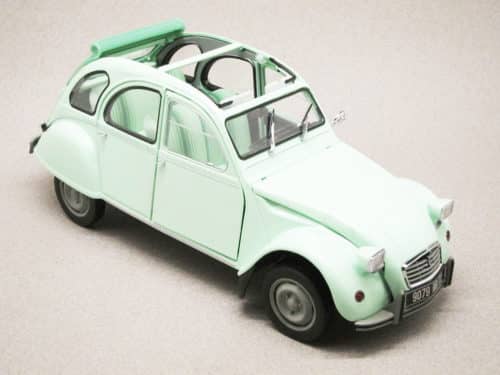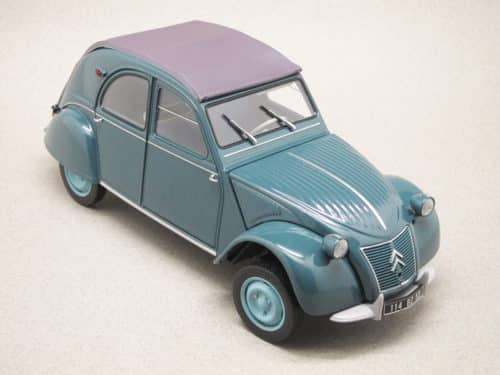Categories
- Uncategorized
- Brands
- Aspark
- Abarth
- AC
- ACMAT
- Acura
- Adler
- AEC
- Aero
- Aero Flite
- Aerocar
- AGF Serval
- Airstream
- Aiways
- Alamagny
- ALCA
- Aleko
- Alfa Romeo
- Allard
- Alpina
- Alpine
- Alvis
- AMC
- AMG
- Amilcar
- Amphicar
- Anadol
- Armstrong Siddeley
- Arnolt
- ARO
- Artz
- Aston Martin
- Auburn
- Audi
- Aurus
- Austin
- Austin-Healey
- Auto-Union
- Autobianchi
- Avia
- AWZ
- Babich
- Barkas
- Barnard
- BB
- Bedford
- Bentley
- Berkeley
- Berliet
- Bertone
- Beutler
- Bianco
- Bitter
- Bizzarrini
- BMW
- Borgward
- Bosley
- Brabus
- Brasier
- Brasinca
- Bristol
- Brütsch
- Buckle
- Bugatti
- Bugre
- Buick
- Burney
- Büssing
- Cadillac
- Caterham
- CG
- Chausson
- Checker
- Chenard & Walcker
- Chevrolet
- Chevrolet Corvette
- Chrysler
- Cisitalia
- Citeria
- Citroën in 1:18 scale
- Citroën in 1:43 scale
- Commer
- Cord
- Costin Nathan
- Covington
- Cuningham
- Dacia
- DAF
- Daihatsu
- Daimler
- Dangel
- Datsun
- DB
- De Lorean
- De Tomaso
- Delage
- Delahaye
- Denzel
- DeSoto
- Devon
- Diamond Reo
- Diamond T
- Dixi
- DKW
- Dodge
- Dome
- Donkervoort
- DS
- Dual-Ghia
- Dubonnet
- Duesenberg
- Edsel
- EMW
- Enzmann
- Excalibur
- Facel Vega
- Ferrari-en
- Fiat
- Fleetwood Enterprises
- Ford
- Freightliner
- Friedrich Rometsch
- FSO
- Fuji
- Fuso
- GAC Motor
- Gatso
- GAZ
- Ghia
- Gillet
- Ginetta
- Glas
- Glasspar
- GM
- GMC
- Goggomobil
- Goliath
- Gomolzig
- Gordon
- Gordon-Keeble
- Graham-Paige
- Gumpert
- Gutbrod
- Hanomag
- Hansa
- Hénon
- Henry J
- Henschel
- Hewson
- Hillman
- Hispano-Suiza
- Holden
- Hommell
- Honda
- Hong Qi
- Horch
- Hotchkiss
- Hudson
- Humber
- Hummer
- Hunt
- Hymer
- Hyundai
- IFA
- Ikarus
- Imperial
- IMZ
- Infiniti
- Innocenti
- Intermeccanica
- International
- Invicta
- Irisbus
- Irmscher
- Isdera
- Iso
- Isotta Fraschini
- Isuzu
- Iveco
- Jaguar
- Jamos
- Jeep
- Jensen
- Jowett
- Kahlbacher
- Kaiser
- Kalmar
- Kamaz
- Kamm
- Kenworth
- KIA
- KIM
- Koenigsegg
- Kohlruss
- KrAZ
- Krupp
- KTM
- Kurtis
- Lada
- Lagonda
- Lamborghini
- Lancia
- Land Rover
- Lanz
- LaSalle
- Laurin & Klement
- Lea-Francis
- Leichtbau
- Leningrad
- Lexus
- Leyat
- Lightburn
- Ligier
- Lincoln
- Lloyd
- LMX Sirex
- Lotus
- LTI
- LuAZ
- Lynx
- Lysell
- Mack
- Magirus
- Maico
- MAN
- Manic
- Manta Ray
- Marathon
- Marussia
- Maserati
- Mathis
- Matra
- Matra-Simca
- Maybach
- Mazda
- McLaren
- McQuay-Norris
- Melkus
- Mercedes in 1:18 scale
- Mercedes in 1:43 scale
- Mercer
- Mercury
- Messerschmitt
- MG
- Mikrus
- Mini
- Mismaque
- Mitsubishi
- Mitsuoka
- Mohs Motor Car
- MOL
- Monica
- Monteverdi
- Moretti
- Morgan
- Morris
- Moskvich
- Multicar
- Murena Motors
- Nardi
- Nash
- Neckar
- Neoplan
- Nissan
- Norman Timbs
- NSU
- Oldsmobile
- Oltcit
- OM
- Opel
- OSCA
- Packard
- Pagani
- Panhard
- Panther
- Peerless
- Pegaso
- Persu
- Peterbilt 352 H (IXO) 1:43
- Petermax Müller
- Peugeot in 1:18 scale
- Peugeot in 1:43 scale
- Phänomen
- Phantom
- Piaggio
- Pierce-Arrow
- Pininfarina
- Playboy
- Plymouth
- Polestar
- Polski-Fiat
- Pontiac
- Porsche in 1:18 scale
- Porsche in 1:43 scale
- Porsche in 1:87 scale
- Praga
- Puma
- Rambler
- Ramses
- Rapid
- Reliant
- Renault in 1:18 scale
- Renault in 1:43 scale
- Reyonnah
- Riley
- Robur
- Rochet – Schneider
- Rolls-Royce
- Rosengart
- Rover
- RUF
- Ruhrfahrzeugbau
- Saab
- Sabra
- Sachsenring
- Salmson
- Saurer
- Saviem
- SC Johnson Wax
- Scania
- Schlörwagen
- Scion
- Seagrave
- Seat
- Setra
- SFM
- Shanghai
- Shelby
- Shelter
- Siata
- Simca
- Simson
- Singer
- Sinpar
- Skoda
- Smart
- Smeal
- SMZ
- Spyker
- Steyr-Puch
- Stout
- Stratos
- Studebaker
- Stutz
- Subaru
- Sud-Aviation
- Sunbeam
- Suzuki
- Syrena
- Talbot
- Tarpan
- Tata
- Tatra
- Tesla
- Thunderbolt
- Thurner
- Toyopet
- Toyota
- Trabant
- Triumph
- Triver
- Troll
- Tucker
- TVR
- Uaz
- UNIC
- Unimog
- Vanden Plas
- Vauxhall
- Vector
- Velam
- Vemac
- Venturi
- Veritas
- Voisin
- Volkswagen
- Volugrafo
- Volvo
- Walter
- Wanderer
- Ward LaFrance
- Warszawa
- Wartburg
- White Company
- Wiesmann
- Wikov
- Willème
- Willys
- Wolseley
- Yamaha
- Yugo
- Zagato
- Zastava
- Zaz
- Zil
- ZIS
- Zündapp
- Zunder
- Cars
- Commercial vehicles
- Competition
- Advertising vehicles
- Concept cars
- Fire and Rescue
- Police cars
- Ambulances/Hearses
- JAPAN IMPORTS
- Buses
- Movies and TV series
- 1:18 SCALE SELECTION
- 1:64 scale selection
- 1:87 scale selection
- Tour de France
- Campers
- Helicopters
- Accessories
- All Citroën 2CVs!
- Manufacturer news
- Minicarweb selection
- Gift wrapping
- FLASH SALES
Manufacturers
Sales !
Useful information
Newsletter
Tags
Tags
All Citroën 2CVs!
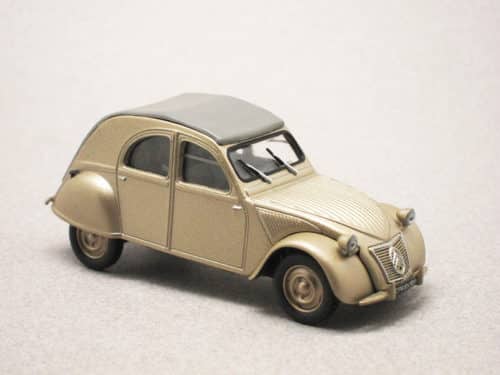
Citroën 2CV Type A (Norev) 1:43
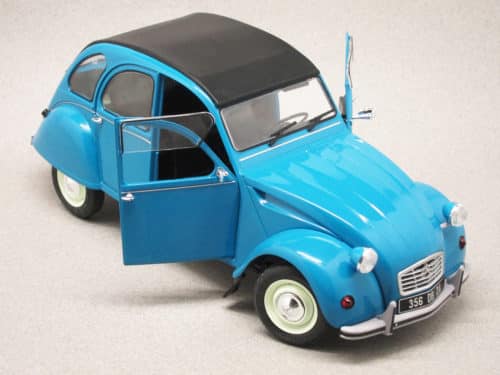
Out of stock
Citroën 2CV blue (Solido) 1:18
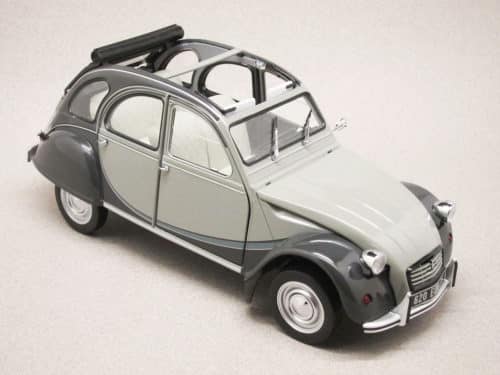
Citroën 2CV6 Charleston grey (Norev) 1:18

In stock
Citroën 2CV Sarhy blue (Franstyle) 1:43
The 2CV made its career in sedan and panel van (with some pickup derivatives). But other bodies were also available, offered by many coachbuilders or artisans. Gazelle and Hoffmann, among others, made convertibles in small series (based on existing models). But this Sarhy, built in the 1980s on a shortened chassis, remained a prototype.
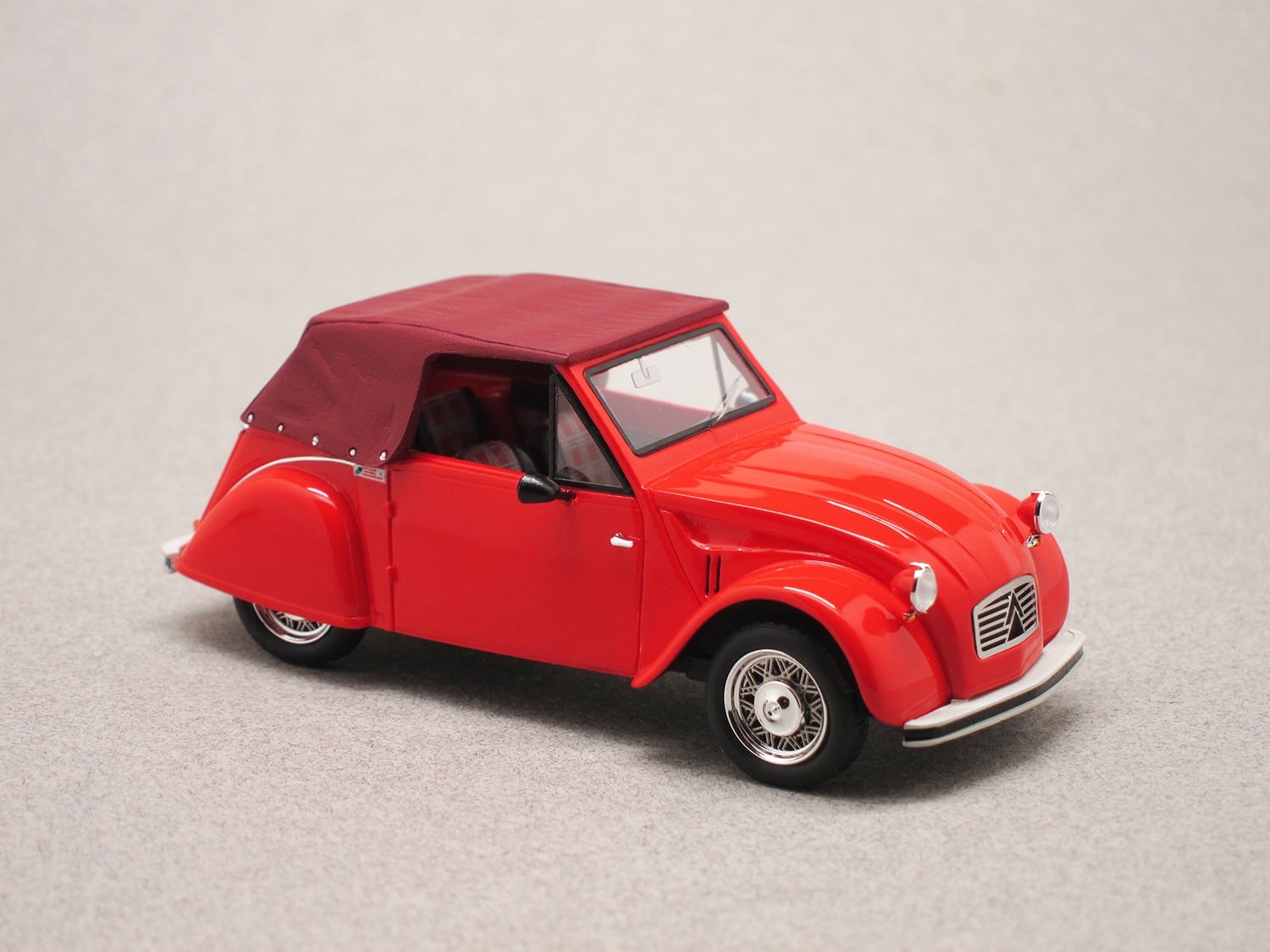
In stock
Citroën 2CV Sarhy red (Franstyle) 1:43
The 2CV made its career in sedan and panel van (with some pickup derivatives). But other bodies were also available, offered by many coachbuilders or artisans. Gazelle and Hoffmann, among others, made convertibles in small series (based on existing models). But this Sarhy, built in the 1980s on a shortened chassis, remained a prototype.

In stock
Citroën 2CV6 yellow (Jet-Car Norev) 1:43
Introduced at the end of 1948 and produced until 1990, the 2CV is a French motoring icon. This 2CV6 Club trim level was launched in July 1979, with specific rectangular headlights, but shared its twin-cylinder 602 cc engine with the standard 2CV Special. Reproduced by Norev's brand Jet-Car, the diecast model is simple but the mould is rather detailed.
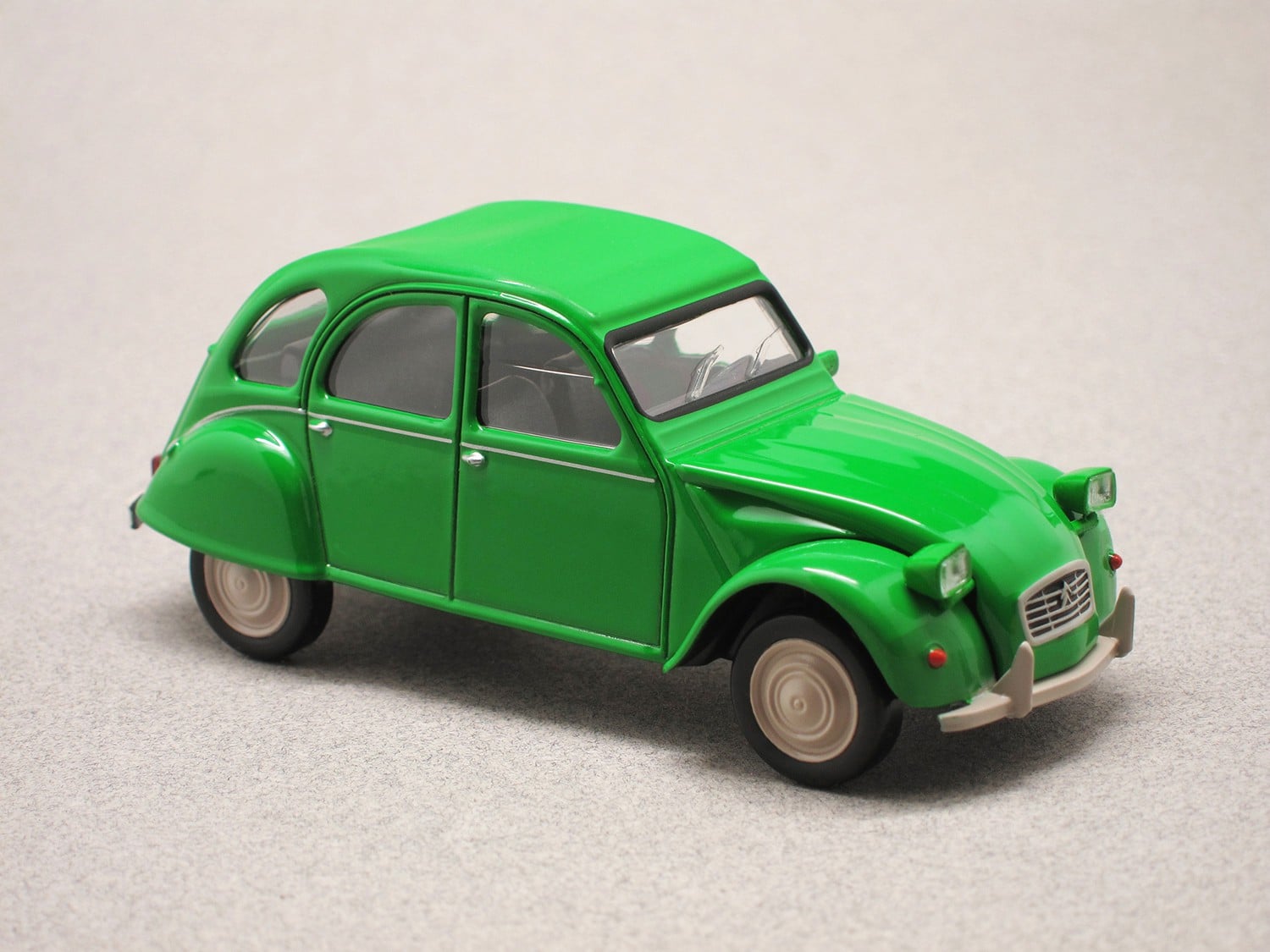
In stock
Citroën 2CV6 green (Jet-Car Norev) 1:43
Introduced at the end of 1948 and produced until 1990, the 2CV is a French motoring icon. This 2CV6 Club trim level was launched in July 1979, with specific rectangular headlights, but shared its twin-cylinder 602 cc engine with the standard 2CV Special. Reproduced by Norev's brand Jet-Car, the diecast model is simple but the mould is rather detailed.

In stock
Citroën 2CV6 orange (Jet-Car Norev) 1:43
Introduced at the end of 1948 and produced until 1990, the 2CV is a French motoring icon. This 2CV6 Club trim level was launched in July 1979, with specific rectangular headlights, but shared its twin-cylinder 602 cc engine with the standard 2CV Special. Reproduced by Norev's brand Jet-Car, the diecast model is simple but the mould is rather detailed.
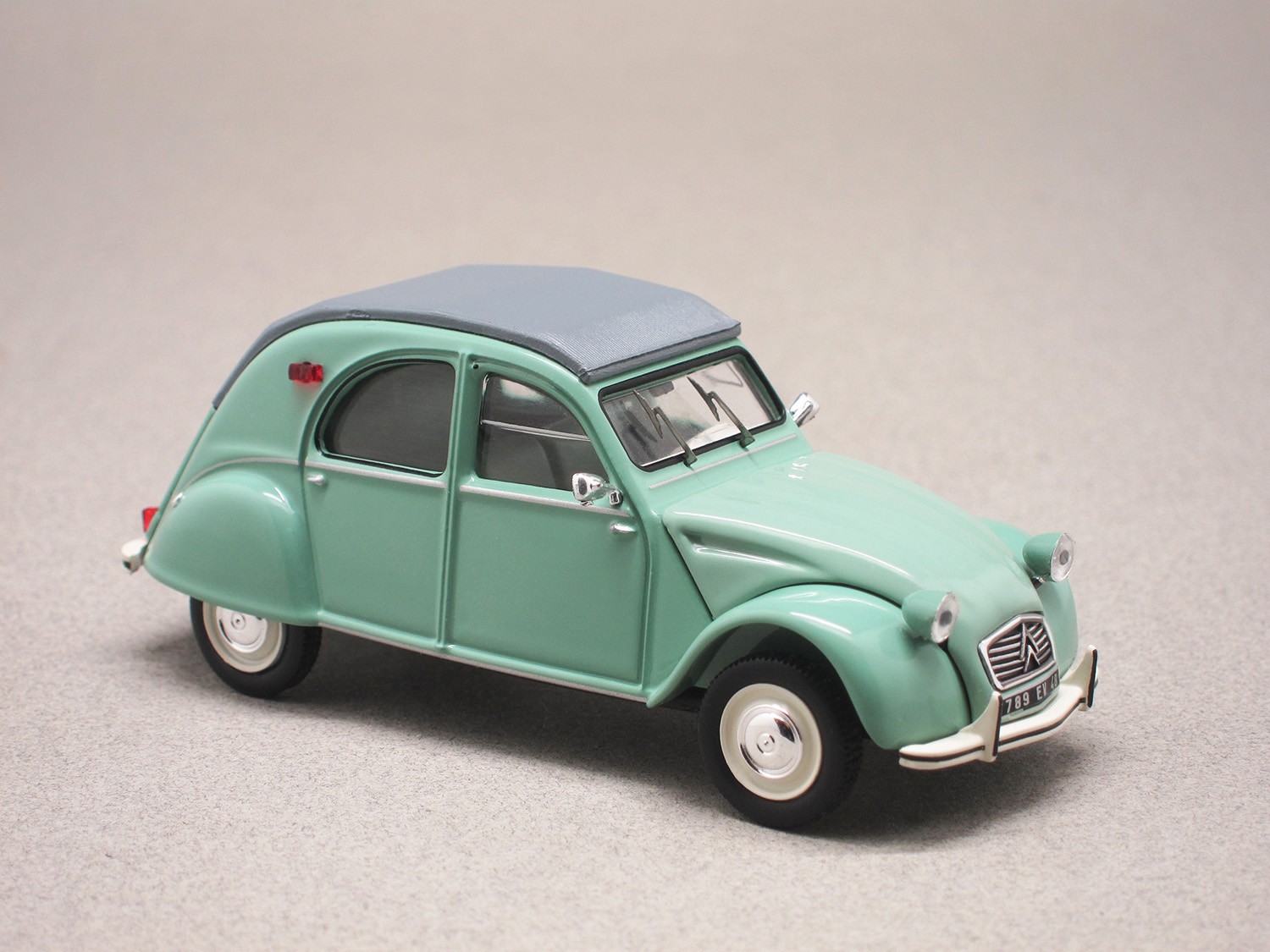
In stock
Citroën 2CV 1964 green (Odéon) 1:43
The popular 2CV, produced between 1949 and 1990, was only slightly updated throughout its long career. The first major change is the five-rib bonnet, in 1961. The AZA version we have here is a 1964 model year, which receives reinforced bumpers in 1963. The following year, the 2CVs will be distinguished by their four front-hinged doors.

In stock
Citroën 2CV AZU 1959 (Norev) 1:43
Based on the 2CV introduced in 1948, this commercial variant is unveiled at the end of 1950 and sold from 1951. This AZU version was released to support the AU from 1954 with a bigger engine (425 cc instead of 375). Here it wears the colours of the Wegenwacht, the roadside assistance of the Royal Netherlands Tourism Association.
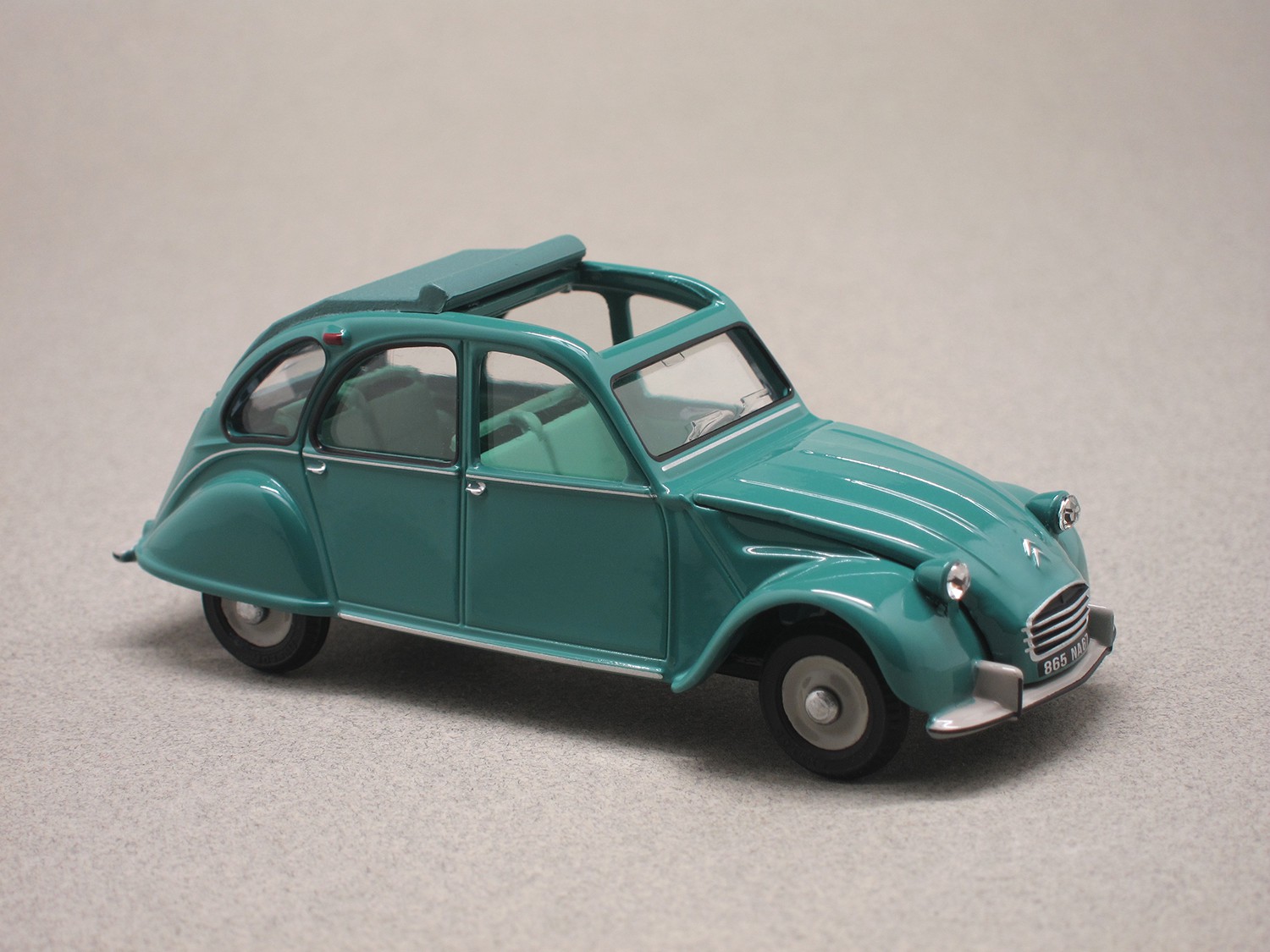
In stock
Citroën 2CV AZL green (Norev) 1:43
Unveiled in October 1948 and produced a year later, the famous 2CV was only slightly updated during its long career that ended in 1990. Its modernized 5-rib bonnet appeared in 1960 and its front hinged doors in 1965. Accordong to Norev, we have a 1966 AZL version. It is rather an AZA, which received six side windows, visible here.

In stock
Citroën 2CV Dolly 1985 (Norev) 1:43
After the success of the Charleston released in 1980, Citroën then tried other colour combinations in the later years of the 2CV. Therefore, three series of "Dolly" variants were sold with, each time, three colour combinations to choose from. This Rialto yellow and Cormoran grey version is part of the first series, launched in March 1985.
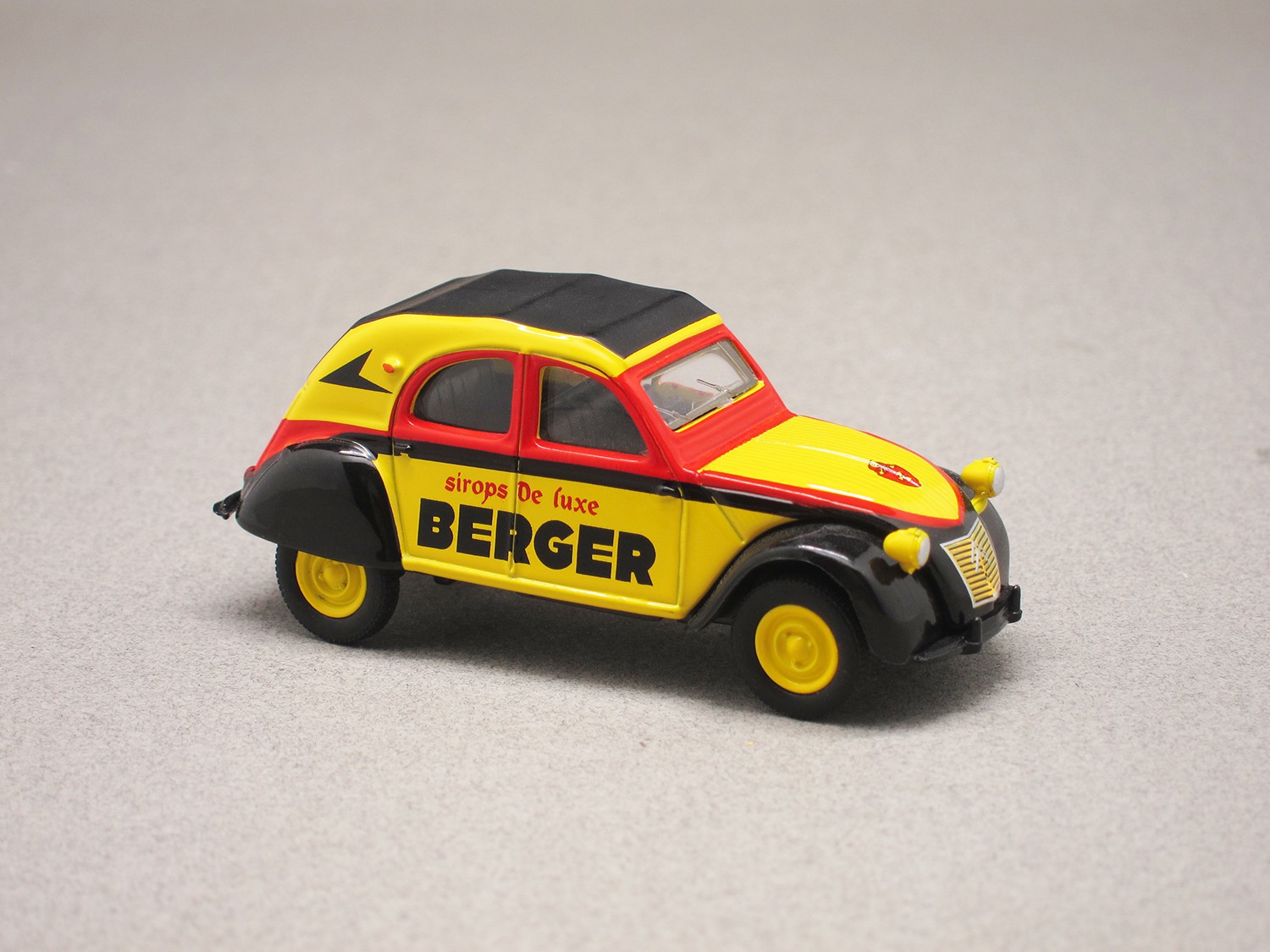
Citroën 2CV 1959 Tour de France “Berger” (Norev) 1:64
This model car comes from the "Norev Toys" collection, previously called "3 inches". The 1:64 scale is mentioned as an indication, but is not systematically fully respected.
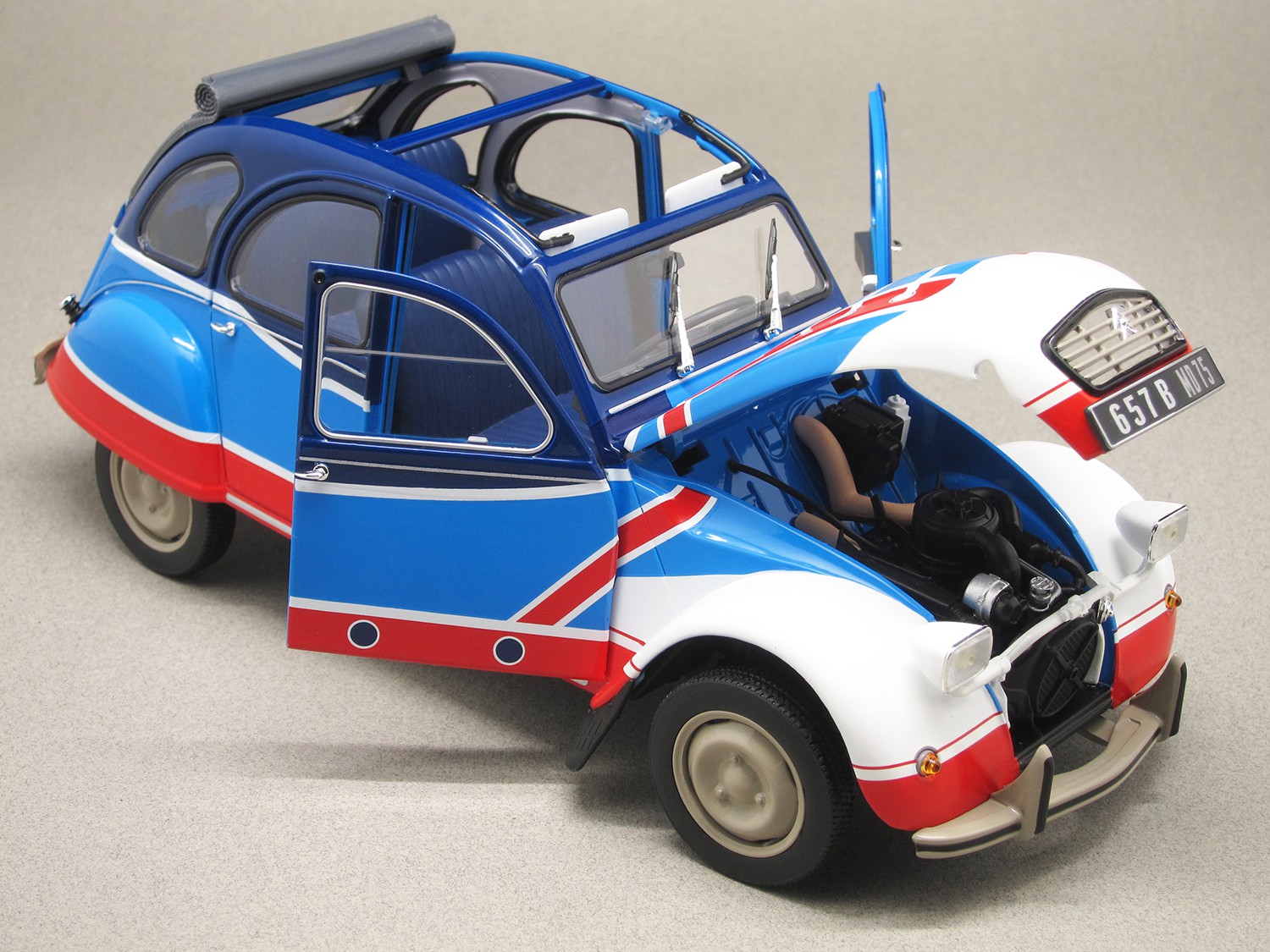
In stock
Citroën 2CV Basket (Norev) 1:18
Only two units of this special series, imagined in 1977, were produced. This is a competition created by Citroën and Camondo, a French school of architecture and design. A young student, Claire Pagniez, had the idea to transform the 2CV into a giant trainer. On this model car, the front doors, the boot and the bonnet can open.
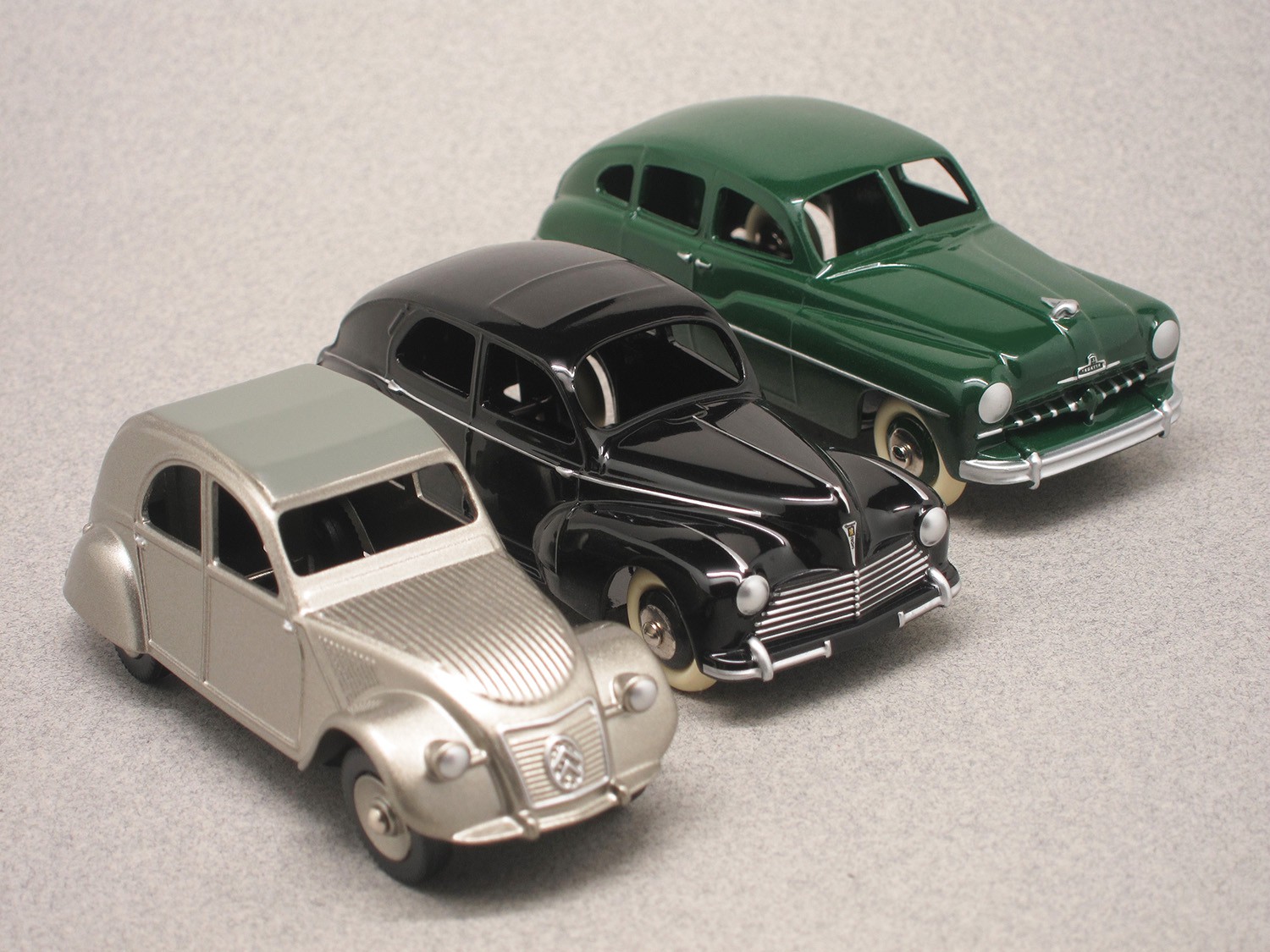
In stock
Set Salon de Paris 1949 (CIJ) 1:43
CIJ reproduces a scene that took place at the Salon de Paris from October 6 to 16, located at the Grand Palais. This event could have happened a year earlier. The Citroën 2CV was exhibited for the second time and finally unveiled its mechanics. For the Peugeot 203, it was also the second show, as well as for the Ford Vedette, the only French model equipped with a V8, introduced in 1948.
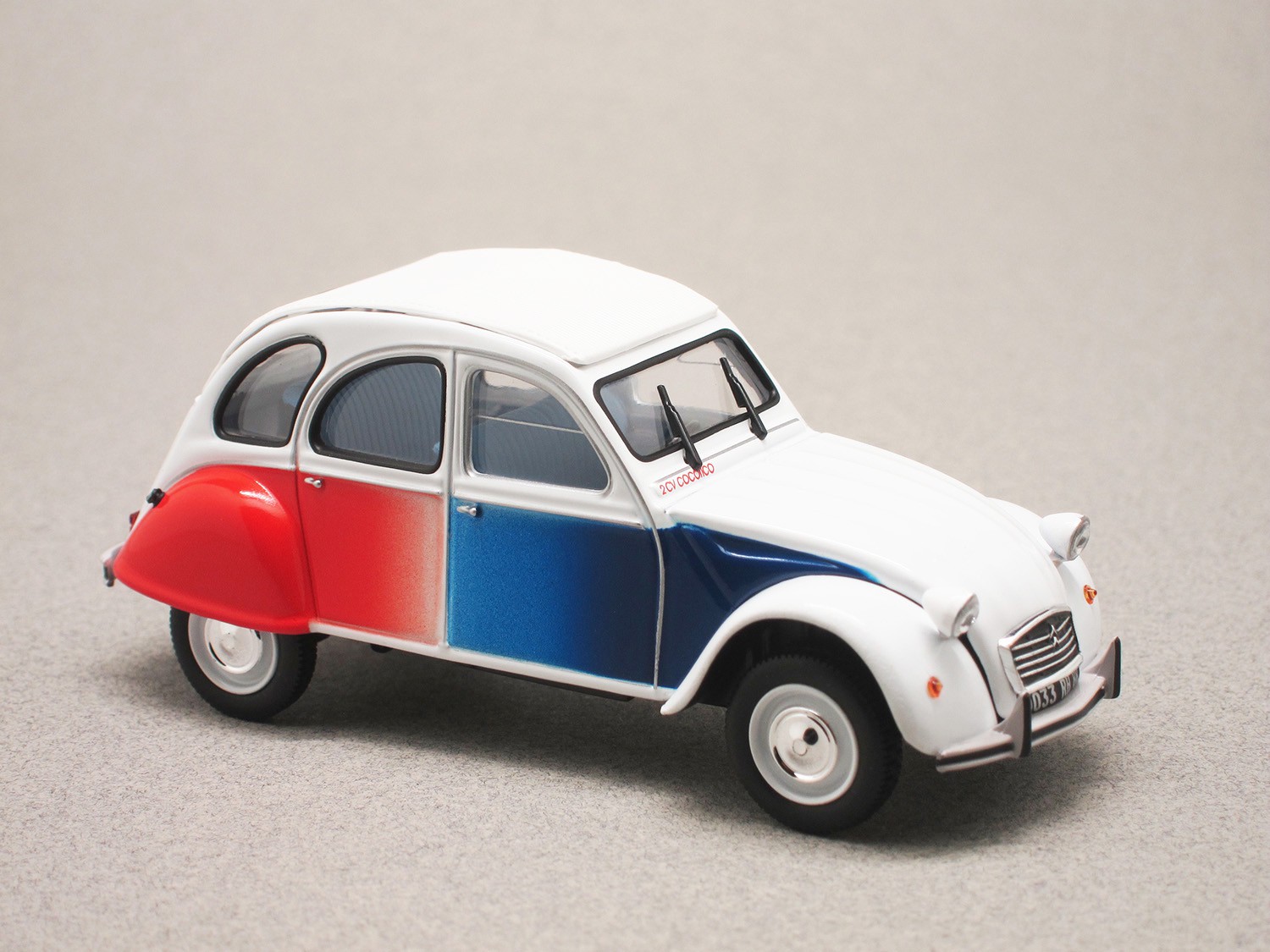
In stock
Citroën 2CV Cocorico (Norev) 1:43
Unveiled in Paris in autumn 1948 and sold a year later, the 2CV ended its long career in 1990. During its last decade, after the 1976 Spot, the Citroën offered numerous limited editions: several colours of Charleston, many Dolly versions, but also a 007, or even this Cocorico (the French equivalent of cock-a-doodle-doo), marketed in 1986 in 1,000 units.
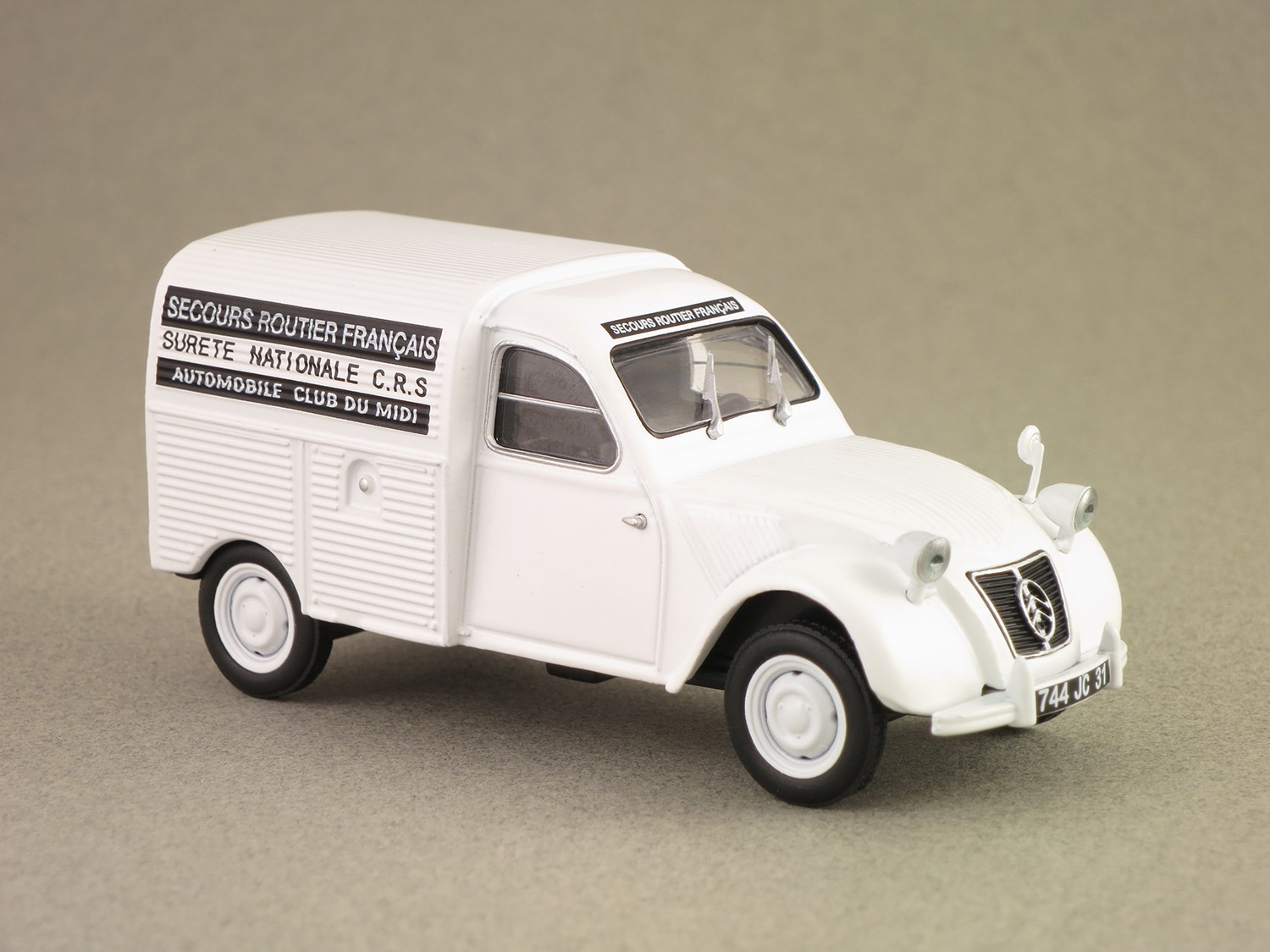
In stock

